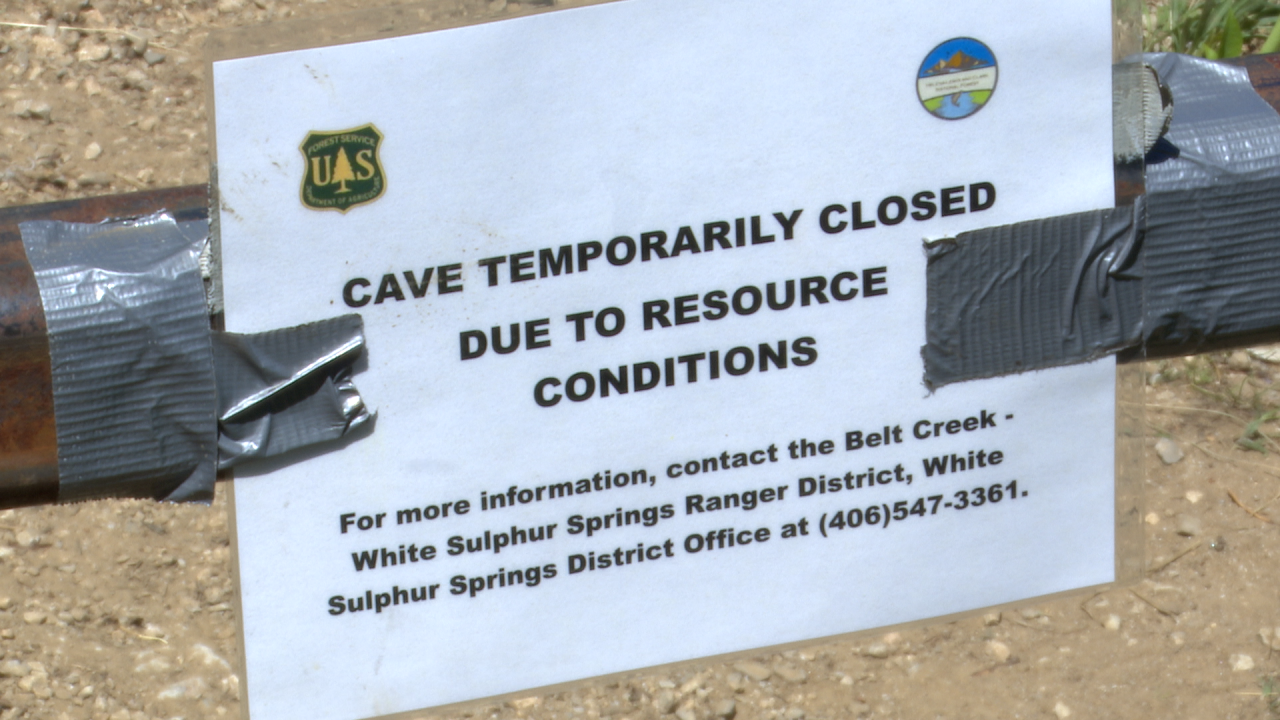CASCADE COUNTY — Outside Lick Creek Cave in Cascade County, you'll find a large sign with information about White Nose Syndrome.
"We've known about White Nose (Syndrome) since about 2006, 2007, so we've slowly been watching it progress westward from New York state," Montana FWP Non-Game Wildlife Biologist Shannon Hilty said.
It's caused by a fungus.
Hilty was one of the biologists who discovered the fungus in the cave during a bat survey in May.
White Nose Syndrome is an often-fatal disease that causes bats to become irritated and dehydrated and come out of winter hibernation early, causing them to use up the fat they need to survive the winter.
"All the bats that I held and swabbed in the cave, they looked really healthy to me so I was feeling okay about the survey," Hilty said.
Even so, because the fungus was found, when biologists go back to the cave for another survey in 2024 they expect to find some bats will have developed the disease.

The U.S. Forest Service, which manages the cave, has decided to close it until further notice to try to help prevent the spread of the disease.
"There are a lot of treatments that are still largely experimental. There are things like applying UV light to substrates, like entire caves, to kind of zap the fungus that way as well as vaccines," Hilty explained.
That's easier said than done, though, because in Montana and the west as a whole she said the majority of bats don't hibernate in caves.
"So the question is then, what would we treat?" said Hilty.
According to FWP, White Nose Syndrome has been confirmed in 40 states and eight Canadian provinces and has killed over 6 million bats since 2006.
The fungus has been found in 16 Montana counties and in four counties bats with White-Nose Syndrome have been found.

"A single, little brown myotis can eat anywhere between 1,200 and 1,600 mosquitoes in a single hour. So that's a huge number of insects. If you're thinking about pest control for, maybe, forest health or agriculture that money adds up. I think they're estimating $53 billion annually in terms of savings on agricultural pest control," Hilty said.
A small animal with a big impact.
How can you help?
FWP recommends anyone who visits an area with roosting bats remove dirt and mud from clothes and gear before leaving the area. Bag the items and clean them as soon as you get home. Anyone visiting multiple areas with roosting bats should follow decontamination steps designed to help prevent the spread of White-Nose Syndrome.
If you find a dead or sick bat, or a group of bats, or find bats in unexpected places do not handle them. Contact your local FWP office for guidance. You can also contact the FWP Wildlife Health Lab in Bozeman at 406-577-7882.
TRENDING
- Woman dead in grizzly bear attack
- 18 charged for soliciting prostitution
- Minor train derailment west of Havre
- Montana property tax relief programs
- RECENT OBITUARIES
FOLLOW KRTV: Instagram | TikTok | Twitter





